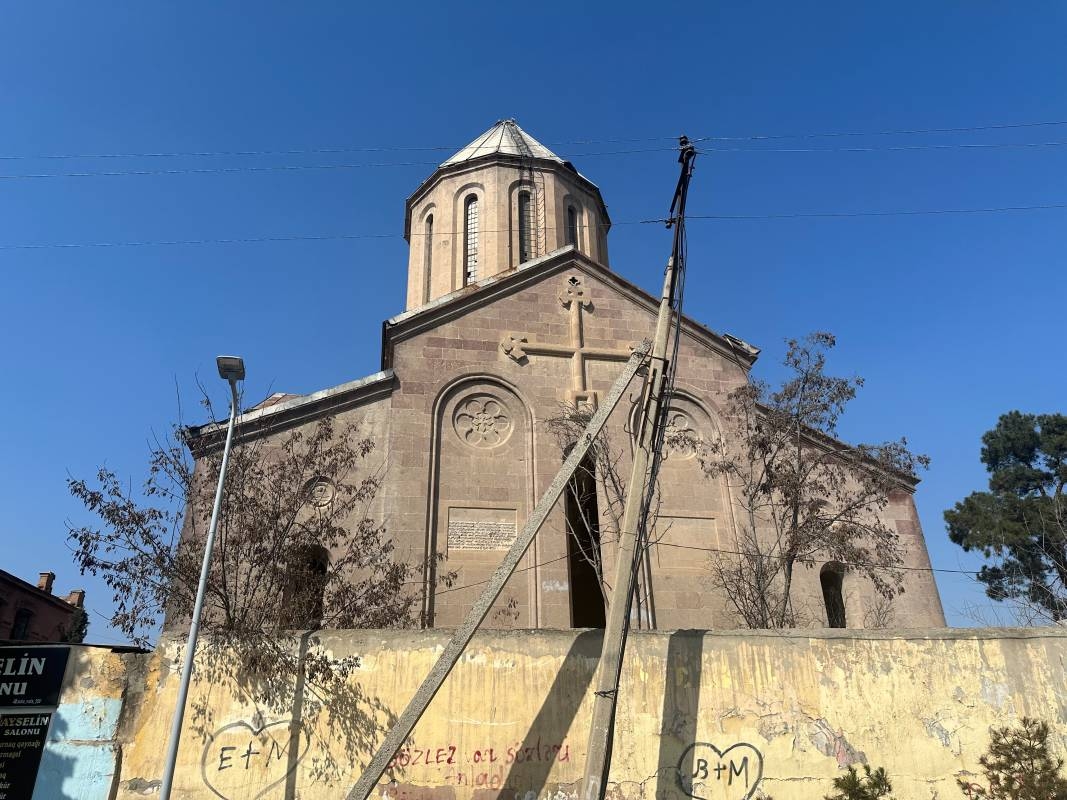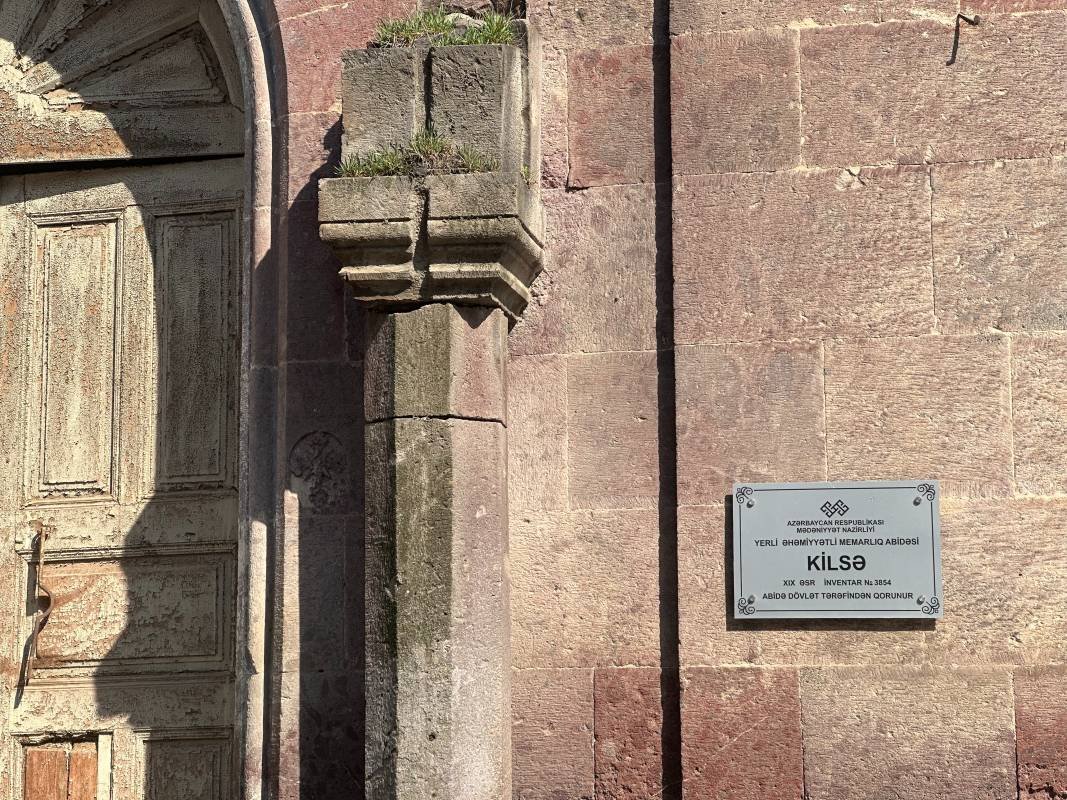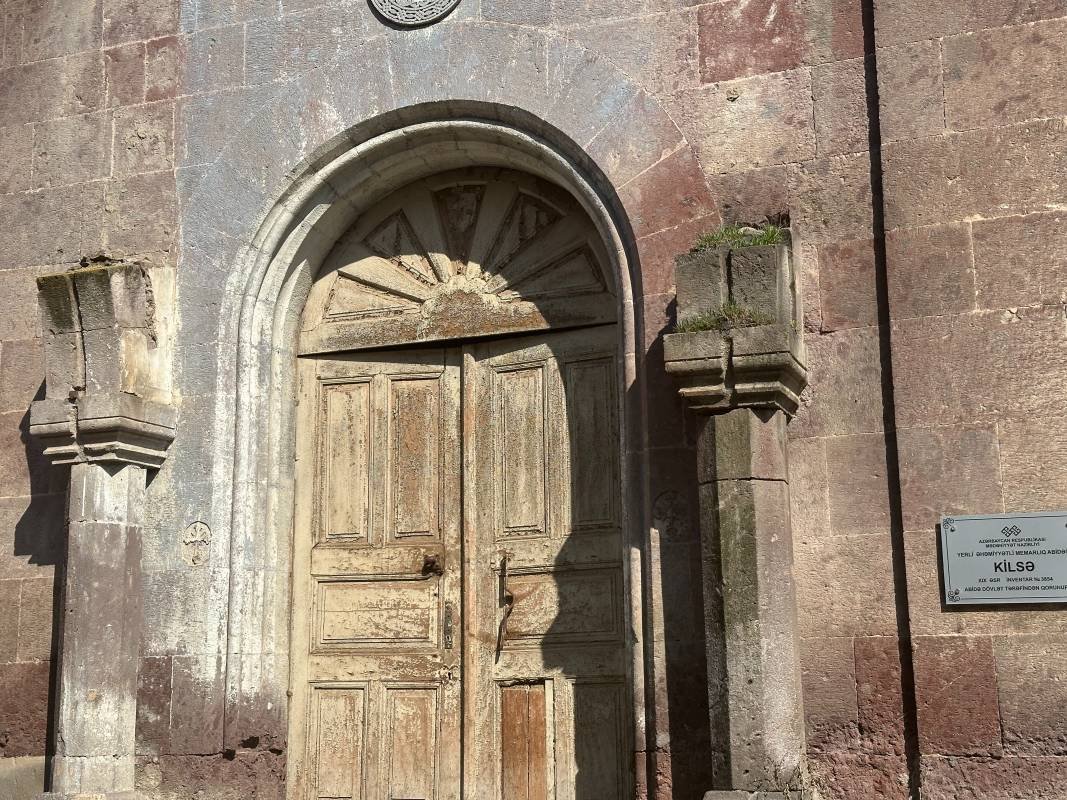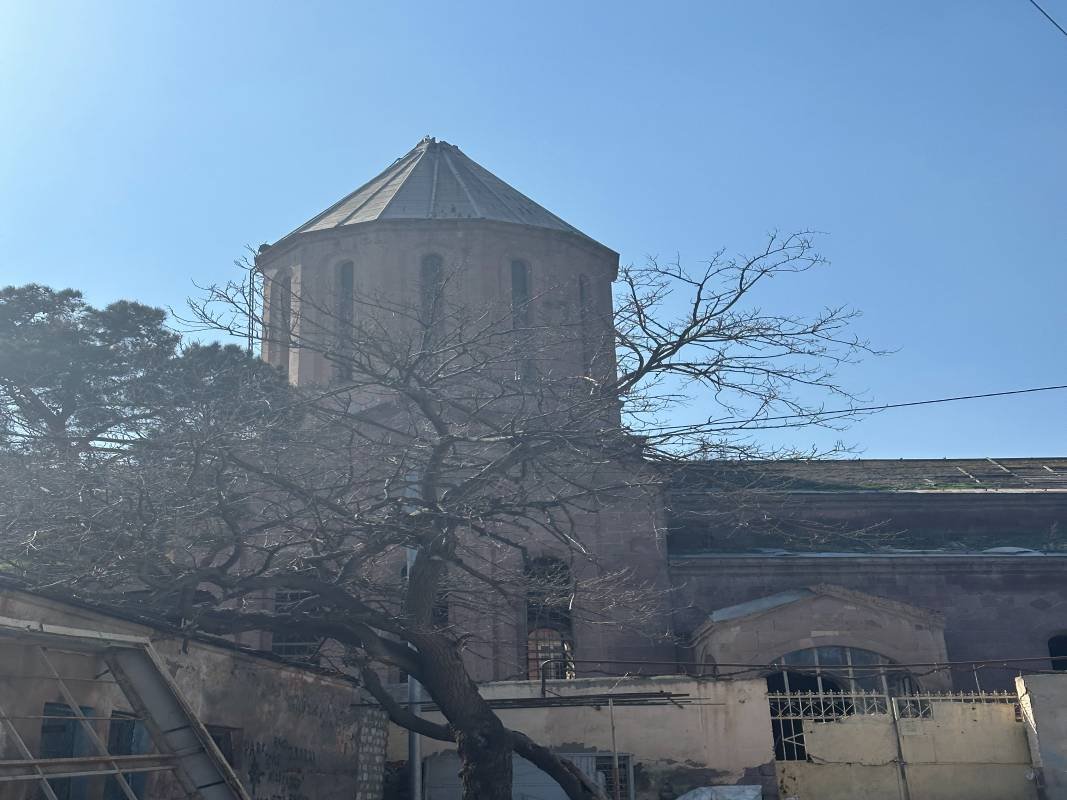
Until the end of the 20th century, my hometown Ganja - the second biggest city of the Republic of Azerbaijan - used to be a diverse city with communities hailing from various ethnic, religious and cultural backgrounds. According to the 1979 Soviet Census on the city, 72% of the population were ethnic Azerbaijanis, while there was a considerably high proportion of Armenians and Russians, constituting 17% and 8% of the population respectively. The Christian Armenian population of the city mainly lived on the right bank of the Ganja River and in the other upper areas of the city. There is a neighborhood called “Vtoroy chast” (rus. “The second part”) which was considered by the city’s residents to be the main center of the Armenian community. This neighborhood is located in a partially elevated part of the city and is distinguished by its clean air and unique style of courtyard houses. Neat trees, mostly white mulberry trees, line the front of the houses.
Ministry of Culture of the Republic of Azerbaijan, Architectural Monument of Local Significance. Church 19th CenturyInventory No. 3854. This monument is under state protection.
However, after the outbreak of deadly conflict between Armenia and Azerbaijan in the late 1980s, ethnic Armenian communities of Azerbaijani regions and ethnic Azerbaijani communities of Armenian regions left their hometowns under duress. Those neighborhoods, which were previously populated by Armenians, are currently inhabited mainly by ethnic Azerbaijanis refugees from Armenia, as well as people from other parts of the city and the surrounding regions. Nowadays, Ganja is more or less a monoethnic and monocultural city. Despite that, many people still remember their former Armenian neighbors as well as specific places where they used to interact, trade, work and share conversation on a daily basis. Above all, they pick out the following places to highlight: the “Armenian bazar” (trade center where Armenians used to sell their products), “hamam” (a communal bathhouse), movie theater, School N11, and particular pieces of architecture. Although the population, many street names and buildings have changed in the last three decades, the city still holds certain striking signs of the old days, when various ethnic and religious communities peacefully lived together. Among these, the most symbolic is Saint Grigor church, located on Taghiyev Street, one of the main streets in the “Second part” of the city. The church was built with local red stone in the middle of the 19th century and was used by the Armenian community until they left the city. Due to its elevated position and the absence of tall buildings around it, the church can be seen from various parts of the city, imbuing it with a unique charm to . From a distance, it is not apparent that the church is unused and abandoned. However, as you get closer, the view changes. It becomes clear that there is no direct entrance, the doors are locked, the area is fenced off, and it has been left without maintenance.
The address of the Church: Taghiyev 58. The Church is located within a dense neighborhood.
The younger generation might not be aware of the story or past of that church, as well as of other symbols in the city related to the previous co-existence, because of the limited sources of information and current monocultural environment in the city. That is why it may not hold any special meaning for them. However, for the older generation, the church is more meaningful and represents a reminder of their former Armenian neighbors, colleagues, classmates and friends. For this reason, I believe that objects with such special significance, with their own unique history, can sometimes gain even more importance through the personal stories that remain in people's memories. When those stories are forgotten, we end up losing a lot. Memory and history, though often linked, are fundamentally different. Memory is living, emotional, evolving, and tied to identity, shaped by forgetting and revival, often selective and symbolic. It belongs to specific groups and is rooted in the sacred and the tangible. History, by contrast, is analytical, secular, and universal, seeking objectivity in reconstructing the past through critical methods. Memory is absolute and personal; history is relative and collective.
In order to keep memories alive and pass them on to people who have limited awareness about the former co-existence of ethnic groups in the city, we have spoken to an elderly resident of the neighborhood and asked her about those days and the former condition of the church in particular. A 55-year-old resident describes her childhood at the above mentioned neighborhood as a peaceful co-existence of communities. She mentions that they lived with Armenians side by side, went to kindergarten and school together, and shared their joy and grief with one another. She also remembers the days when the church was well-maintained and functional. The person also highlights how the Soviet policy based on atheism affected the usage of the church:
We passed by the church often with my Armenian classmates and I used to look at the church with great interest. However, because of the Soviet policies and strict rules inculcated at school, it was forbidden for us to enter the church. But the older generation used it freely… If we entered it, we could be punished by the school administration. However, one time, we found courage and secretly entered it… I remember the church as such…
She also mentions how the communities used to celebrate religious and national holidays together:
When it was Nowruz, my mother always sent food and sweets to all our Armenian neighbors... The same happened during the Easter holiday. Neighbors gathered at home regardless of ethnic background and celebrated the holiday with Easter cake and coffee… We always celebrated such holidays together without any difference…
She adds that they even shared forms of prayer:
Some Armenians used to visit “Imamzadeh” mosque and pray there with my mother. They did it with tolerance and no matter their religious belonging... We thought that God is one no matter which religion…
Today the church is neglected and unused. It is an old building with locked doors and garbage around it. But who knows, maybe this church and memories of the residents related to it will become not only a sign of the historical past, but also an inspirational bridge between the past and the future. A peaceful future can come about when justice is established and when communities start to live peacefully again, allowing them to work, study, create and even pray together…






